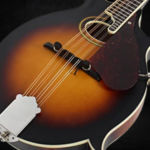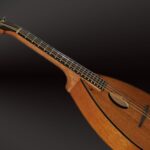Mastering an instrument takes time, practice, and a lot of effort. As a self-taught musician, I’ve put in hundreds of hours figuring out my mistakes before I could even begin practicing properly.
To be honest, I initially thought that knowing how to handle a guitar would help me learn how to play the ukulele. Even though it did to some extent, there was still much work to be done. That’s when I stumbled across beginner ukulele books.
Quick Look: Best Beginner Ukulele Books
★ #1 Best Beginner Ukulele Book: Music Theory ★
- Best Music Theory Beginner Ukulele Book: Ukulele Method Book 1
- Best Songbook Beginner Ukulele Book: Ultimate Ukulele Fake Book
- Best Video Lesson Beginner Ukulele Book: Ukulele Primer Book
- Best Fingerstyle Beginner Ukulele Book: The Beatles for Fingerstyle
- Best Advanced Ukulele Book: Ukulele Aerobics
Chord sheets, music theory magazines, and fake books have tremendously helped me eliminate the guesswork in my playing. That’s why I’ve reviewed some of the best beginner ukulele books so that you can step up your game as easily as I did. Let’s take a look.
What Makes a Great Ukulele Book?
In my opinion, a great ukulele book needs to be educational, enjoyable and entertaining at the same time. Bland sheets of music aren’t exactly attractive, while books that focus too much on the “fun” aspect typically offer little practical value.

Of course, there are also issues of quantity and quality of content. A beginner uke book needs to feature small, understandable sections that a child would be able to understand.
If the lessons (or songs) are categorized thoughtfully, that’s a huge plus. Someone who just started out playing the ukulele isn’t supposed to absorb every bit of information within a few days.
Types of Ukulele Books
I used to think that ukulele books are simply the author’s interpretation of what the instrument is and how it should be played. This is only partially true, as there are multiple types of ukulele books, including:
Music Theory Books
In my opinion, music theory is not mandatory to play an instrument. Self-taught musicians will probably agree with me, as well as the fact that you will eventually learn bits and pieces of music theory as you progress as a ukulele player.
However, I strongly recommend learning the basics as soon as possible.
We develop unique habits as we practice the same techniques, and we memorize the way we play songs after we learn them. We’re also not completely aware of the mistakes in our playing and the bad habits that we’ve developed along the way.
Any music theory ukulele book will help you build your knowledge and skills upon a firm foundation. Even though most theory lessons may be less entertaining than actual songs, it’s important to understand the science behind the magic before you progress any further.
Fake Books
Fake books are simplified sheet music books. They’re typically compilations of songs that completely exclude arrangements, intros, and practical advice on how the songs are supposed to be played.
Fake books are perfect for beginners mainly because they’re typically written with simplified symbols and are the polar opposite of sheet music books, which require elementary knowledge of music theory to understand and read.
I recommend using fake books to learn a few songs on your ukulele for fun. They won’t teach you how to perform certain techniques, and they aren’t exactly educational in any other way than helping you strum a couple of chords and melody notes.
However, being able to strum a few licks from my favorite songs was a tremendous boost to my confidence, and I’m sure you’ll become more enamored with the instrument when you’re able to do the same.
Sheet Music Books
Sheet music is taught in music schools, and you’ll need to understand the basics of music theory to get any valuable info from such books. To non-musicians, music sheets represent nothing more than a bunch of numbers, dots, and letters.
However, beginners who learn how to read sheet music will be able to play songs they’ve never heard before. Music sheets contain exact information of each bar in a particular song, how long each note lasts, the tuning, tempo, time signature, and so on.
Song Books
Ukulele song books are somewhere in between fake books and sheet music books. Each author adds their own personal touch, and most of them provide interesting background stories regarding how and why they picked the songs for their compilation.
If you haven’t played any instrument so far and have little knowledge of music theory, I recommend starting with ukulele song books.
These books are typically easy reads, and the songs normally belong to certain themes, such as Best Beginner Songs, Best Disney Songs, Best Beatles Songs, and such.
Practice Books
Practice books are best suited for intermediate ukulele players, but beginners who learn quickly will be able to benefit from them as well.
Essentially, ukulele practice books contain practical lessons that should be repeated in a set period of time (daily, weekly, for a set number of hours). The purpose of practice books is to help you develop your ukulele techniques and healthy playing habits.
Amazon Kindle/E-Books
Basically, these books are PDF adaptations of their original (paperback) versions. The only difference between E-books and regular ukulele books is the fact that the former is accessible via smartphone.
10 Best Ukulele Books
Once you get your first ukulele book, you will most likely want to jump straight onto the next one.

That’s why I think it’s important to stock up on quality books, as there’s nothing more rewarding than being able to consistently improve your skills, techniques, and knowledge.
 1. Music Theory for Ukulele
1. Music Theory for Ukulele
- Author: James Shipway
- Length: 116
- Book type: Music theory book
- Pros: Simplified music theory, easy instructions, useful for beginners and advanced players
- Cons: Pricey, no songs or demonstrations
Let’s start with Music Theory for Ukulele by James Shipway. This is my top pick because it’s all a beginner ukulele player needs to develop as a musician.
This book is divided into 11 chapters and has five appendix chapters for advanced ukulele players, all of which are easy to understand and follow.
The early chapters of Shipway’s Music Theory for Ukulele are focused on the bare essentials of theoretical knowledge, such as tones, semitones, scales, chords, and keys.
As you continue reading it, you’ll start to understand what I consider the alpha and omega of music, which is the art of building chords and chord progressions.
Finally, once you master the bare bones of ukulele playing, you’ll still have the five appendix chapters to refine and polish your skills. Even though it’s pricey, James Shipway Music Theory for Ukulele is one of the most versatile and best ukulele books that the market has to offer.
 2. Ukulele Method Book 1
2. Ukulele Method Book 1
- Author: Hal Leonard
- Length: 48 pages
- Book type: Music theory/song book
- Pros: Touches on multiple topics, easy read, perfect for immediate beginners, cheap
- Cons: Short, concise lessons
Hal Leonard is one of the companies I respect the most. Harold and Everett Leonard Edstrom are the two brothers behind this brand, and I have more than a few of their best-selling books in my collection.
I consider the Ukulele Method Book 1 by Hal Leonard to be one of the simplest ukulele books, as well as among the most valuable tools you can have on your shelf or in your phone.
Each lesson in this book is short and simple, starting with ukulele types, tuning, the basics of music reading, the most essential chords and scales, and a variety of blues, folk, and children’s songs. The epilogue consists of bits and pieces of ukulele history.
If you happen to like the first Ukulele Method book, I also recommend checking out the follow-up Ukulele Method Book 2.
 3. The Ultimate Ukulele Fake Book
3. The Ultimate Ukulele Fake Book
- Author: Hal Leonard
- Length: 632 pages
- Book type: Fake book
- Pros: Enormous collection of popular ukulele songs, includes chords & lyrics to each song, great for other instruments as well
- Cons: Pricey, confusing categorization of songs
When I first picked up my ukulele, I wondered what songs I should start practicing. Since the ukulele’s G-standard tuning is different from the guitar’s standard tuning, the process wasn’t easy and intuitive.
However, Hal Leonard’s Fake Book saved me the trouble of searching for songs I could start playing. This massive collection of chords features over four hundred songs from both famous performers and underdogs.
Some of the most notable songs that The Ultimate Fake Book contains are Crazy, Hey Jude, Riptide, Thriller, Counting Stars, Let Her Go, and countless others. I also liked the fact that each song also featured lyrics as well.
While the Ultimate Fake Book requires you to understand the basic concepts of music theory, it’s still a remarkably valuable tool for players at all skill levels.
 4. Ukulele Primer Book
4. Ukulele Primer Book
- Author: Bert Casey
- Length: 55 pages
- Book type: Music theory/song book
- Pros: Easy read, great mix of theory and songs, simplified instructions
- Cons: Too basic for anyone but immediate beginners
Ukulele Primer Book is a 55-page wonder that may not teach you everything there is to know about ukes, but it will surely help you stand on your own two feet easily and quickly.
First of all, I recommend the Primer for its simplicity. I understand how hard it may be for someone who’s never played an instrument to swim through technical jargon and specifics, and that’s precisely what Casey’s uke book avoids.
That being said, this book feels like it was made specifically for immediate beginners. It’s split into three sections, and the categorization feels natural and organic.
It features several songs and ukulele lessons while its strongest point lies in the exercises that follow each segment.
 5. The Beatles for Fingerstyle Ukulele
5. The Beatles for Fingerstyle Ukulele
- Author: Fred Sokolow
- Length: 136 pages
- Book type: Song book
- Pros: Each song is presented in two approaches, tabs & chord diagrams included, simple sheet music
- Cons: Some songs are better-suited for advanced ukulele players
The Beatles are one of my favorite bands of all time, and I was confident that I knew how to play at least a quarter of their A-side catalog. The Beatles for Fingerstyle Ukulele proved me wrong.
If you’re into this iconic band as much as I am, I strongly recommend you check this ukulele book out. It features 136 pages of beautifully written tabs and chord diagrams, but what I liked the most is that each song is interpreted in two ways.
This is not your average chord book. It features ukulele arrangements for both solo and rhythm guitar, as well as the lyrics to each song.
You’ll be able to learn classic tunes such as Hey Jude, Yesterday, Something, and my personal favorite, While My Guitar Gently Weeps.
 6. Ukulele Aerobics
6. Ukulele Aerobics
- Author: Chad Johnson
- Length: 90 pages
- Book type: Practice book
- Pros: Excellent for building techniques, well-thought training plans, simple sheet music
- Cons: Not ideal for immediate beginners
Ukulele Aerobics is one of my favorite ukulele books. It teaches discipline before anything else, as it features a detailed exercise plan that mixes practical lessons with bits of music theory.
Ukulele Aerobics alternates between chord vocabulary, strumming techniques, fingerstyle exercises, scales, legato lessons, licks, and riffs.
It’s remarkably educative, but I don’t recommend it to immediate beginners. Ukulele Aerobics can be used to learn the fundamental techniques and the basics of music theory, but it mainly aims to help intermediately skilled players advance to a higher level.
On the brighter side, it possesses an incredible reread value, as the program is diverse and adaptive to some extent.
 7. Ukulele Beginners Jumpstart
7. Ukulele Beginners Jumpstart
- Author: Andy Schneider
- Length: 84 pages
- Book type: Music theory/practice book
- Pros: Detailed exercises, comprehensive music theory lessons, versatile
- Cons: Slightly more expensive than average
Andy Schneider’s Ukulele Beginners Jumpstart is basically a 12-day uke course that represents a mix of practical exercises and simple theoretical lessons.
It’s a perfect choice for people who have never played an instrument, as more than half of the lessons talk about familiarizing yourself with the ukulele, the fingerboard, and the strings.
Andy will walk you through the basics of chords and scales without spending too much time on details, which will help you digest the info this book provides more easily.
The last third of the book is dedicated to intermediate players, including lessons about odd time signatures and slightly more complex chord progressions.
Finally, a part that I’m sure you’ll find helpful is the very last page of the book, a chord and note reference.
I’ve read quite a few books where authors assumed players understand everything there is about chords and note symbols. This section may not teach you the entire alphabet of notes, but it will certainly be a handy reminder.
 8. First 50 Disney Songs You Should Play on Ukulele Songbook
8. First 50 Disney Songs You Should Play on Ukulele Songbook
- Author: Hal Leonard
- Length: Song book
- Book type: 162 pages
- Pros: Perfect for children, chord diagrams, lyrics, step-by-step instructions, available as an e-book
- Cons: Pricey
Disney compositions aren’t exactly simple, especially given the fact that the vast majority of songs aren’t composed on a ukulele.
Hal Leonard’s First 50 Disney Songs is a terrific songbook for Disney fans as it contains adaptations of numerous classics along with sheet music, chord diagrams, lyrics, and arrangements.
The Jungle Book’s Bare Necessities, Lion King’s Hakuna Matata, Little Mermaid’s Under the Sea, and Beauty and the Beast’s theme songs are all featured in this book alongside 46 other beautiful compositions.
The thing I liked the most about First 50 Disney Songs is that it features both melody notations and simplified chord diagrams. Furthermore, all fifty songs are also on sheet music as well, which should make this book a bit more useful to advanced players too.
 9. 21 Songs in 6 Days: Learn Ukulele the Easy Way
9. 21 Songs in 6 Days: Learn Ukulele the Easy Way
- Author: Rebecca Bogart and Jenny Peters
- Length: 119 pages
- Book type: Song/practice Book
- Pros: Encompasses the fundamentals of music theory, video courses
- Cons: Several songs are better-suited for advanced players
Rebecca Bogart and Jenny Peters made this beautiful compilation, and I must say that this is an incredibly well-written book. It touches on essential chords and strumming techniques, and it also features a few lessons regarding chord progressions.
The 21 songs in 6 days ukulele book is mainly focused on helping beginner players acquire and polish the fundamental ukulele-playing skills in the shortest time possible.
If you don’t wish to spend hours on music theory and want to start playing straight out of the gate, I think this is the perfect uke book for you.
The style of musical notation is similar to Hal Leonard’s books, featuring simple chord diagrams, plain sheet music, and lyrics.
However, one thing that separates this book from the rest is that it also includes online video courses. In my experience, most students learn faster and remember more details after observing interactive lessons rather than instructions written on a piece of paper.
Finally, I also liked the fact that 11 of the 21 songs are featured in the keys of both F & C. Some of the most notable tracks in these keys are Goodbye, Old Paint, Down in the Valley, Clementine, Buffalo Gals, Banana Boat Song, and Hush, Little Baby.
 10. How To Play Ukulele: A Beginner’s Guide to Learn About the Ukulele
10. How To Play Ukulele: A Beginner’s Guide to Learn About the Ukulele
- Author: Jason Randall
- Length: 58 pages
- Book type: Music theory book
- Pros: Short and fast music theory course, simple step-by-step guide, affordable
- Cons: No practical tips or song lessons
Jason Randall’s How to Play Ukulele is my warmest recommendation for people that want to tackle the fundamentals of music theory. This book focuses on the ukulele’s anatomy, acoustics and method of operation, note names, and ukulele sheet music.
One of the most valuable sections in Randall’s How to Play Ukulele is his personal buying guide. Even though I’ve personally compiled quite a few guides, his take on what to look for in ukuleles made me aware of a couple of things I thought were of little significance.
The practical aspect of this music theory book is limited to sheet music and note names. Even though it doesn’t feature actual song lessons, it will help you understand how this instrument operates, how to control it, and how to avoid common beginner mistakes.
Finally, the thing I liked most about Randall’s How to Play Ukulele is its simplicity. Even total beginners will be able to follow each step of the guide, and every lesson briefly mentions the previous one, so it’s almost impossible to get lost along the way.
Review This Post
Table of Contents
In Conclusion
Before I wrap up this review of best ukulele books, I’d like to give you a few parting tips.
Firstly, don’t underestimate the power of E-books. When I was a beginner, the hardest thing for me was to find a quiet space where I could read my uke books, and Kindle versions can be taken anywhere.
Secondly, embrace music theory as a helping tool to develop as a musician. It’ll be immensely useful later on, especially if you decide to try your hand at other instruments too.
Finally, you can never have too many ukulele books. Each author has their own way of presenting the topic at hand, so in a way, having a few books in one category will help you make a complete picture.













